In the world of Cuban robustos, there are plenty of names that stand out, but one that is often overlooked is the Juan Lopez Selección No. 2. The Juan Lopez brand as a whole is one that gets little attention in the cigar community, to the benefit of those who know what the brand is all about. Juan Lopez is one of the original legacy brands in Cuba, first seeing production in 1876. The brand remained owned and operated by the Sena family until it was sold in 1918. After the revolution in 1960, like most industry on the island, the farmland and factory were both taken over by the Cuban government.
The original blend portfolio consisted of ten different vitolas, most of them ending production in the 1970s and a few in the later 2000s. Since then, Habanos S.A. has slimmed the Juan Lopez macra to only two regular production vitolas (excluding a possible LCDH announced in 2020), focusing more on regional releases. This box is from 2020 and has been in my humidor for just over two months, resting at 67 degrees and 65 relative humidity.
OVERVIEW
VITOLA: Selección No.2-Robusto
SIZE: 4.9″ x 50
ORIGIN: Cuba
FACTORY//BOX CODE: MTS, SEP 2020
WRAPPER: Cuban
BINDER: Cuban
FILLER: Cuban
STRENGTH: Mild to Medium
SOURCE/ONLINE STORE:
Gifted by a good friend
ENVIRONMENT
WHERE:
My backyard patio
WHEN:
Each one was smoked in the AM
DRINKS:
Latte and Water
WEATHER:
Low 60s with a slight breeze
WHAT’S ON:
Listening to a podcast
PRODUCTION
RELEASE TYPE Regular Production
ORIGINALLY RELEASE DATE First released without bands in 1990
TOTAL PRODUCTION
Typical Box Size: Boxes of 25 or Cabinets of 50
Production Totals: Unknown
VITOLA BREAKDOWN
o Robusto (5.9″ x 50)
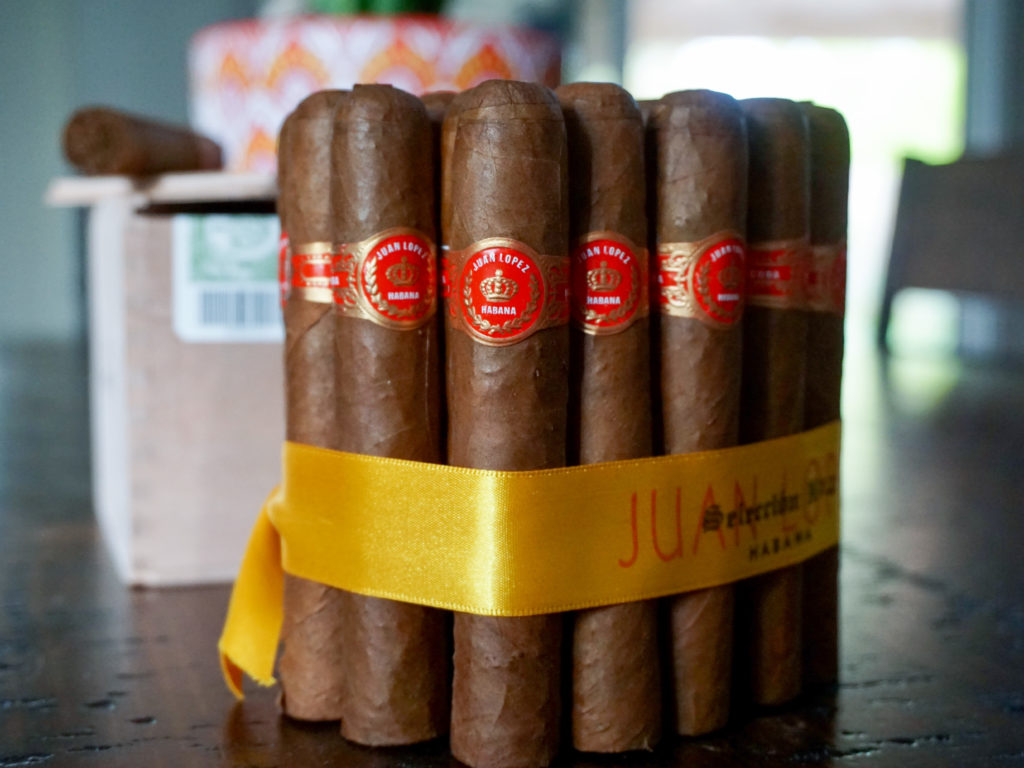
RESEARCH & BACKGROUND INFO
- In the 1990s and earlier Juan Lopez Selección was almost exclusively sold in Cuba.
- The tobacco used to roll Juan Lopez cigars is grown in the Vuelta Abajo.
- The brand was temporarily renamed Flor de Juan Lopez but shortly after transitioned back to Juan Lopez.
BAND DESIGN
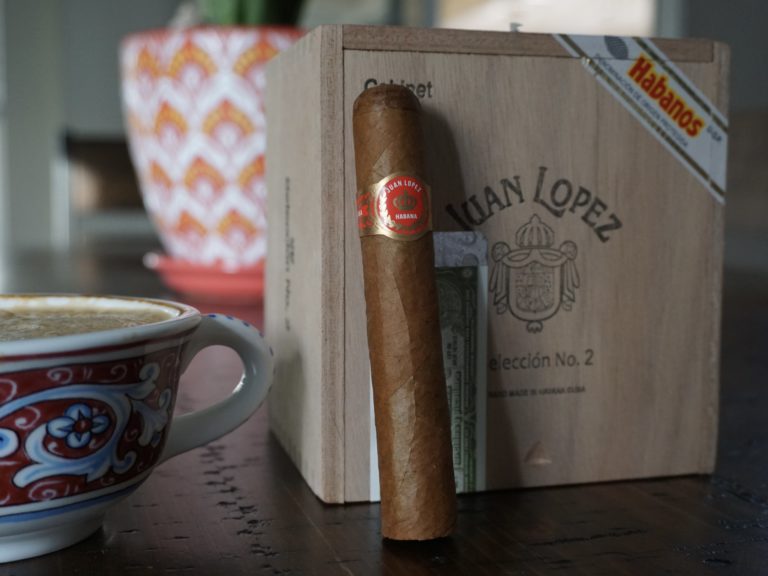
This cigar is wrapped with the Standard B band, which was put into production in late 2005. The band is similar to the original with some minor tweaks: the band is slightly smaller than the original and it has had some of the literature replaced with updated terminology. Other than these small variations, the band is similar to the pre-2005 design.
The design for this band has been roughly the same since pre-1960, adding some unique character and heritage. The background of the band is a vibrant red, not to be confused with the deep reds you find in the Romeo branding. The edges of the band are embossed and trimmed in a grainy gold ink. Inside each of the shoulders of the band are two diagram boxes: one on each side and trimmed with the same gold ink. The left diagram box has the country of origin, Cuba, in white ink. The right side has Habana printed in the same white ink. Centered on the band is an oval ring, surrounding a laurel wreath and crown, all embossed and printed in gold ink. Above the crown is the brand name, Juan Lopez, and below the wreath is Habana, both in white ink.
PRE-LIGHT OBSERVATIONS
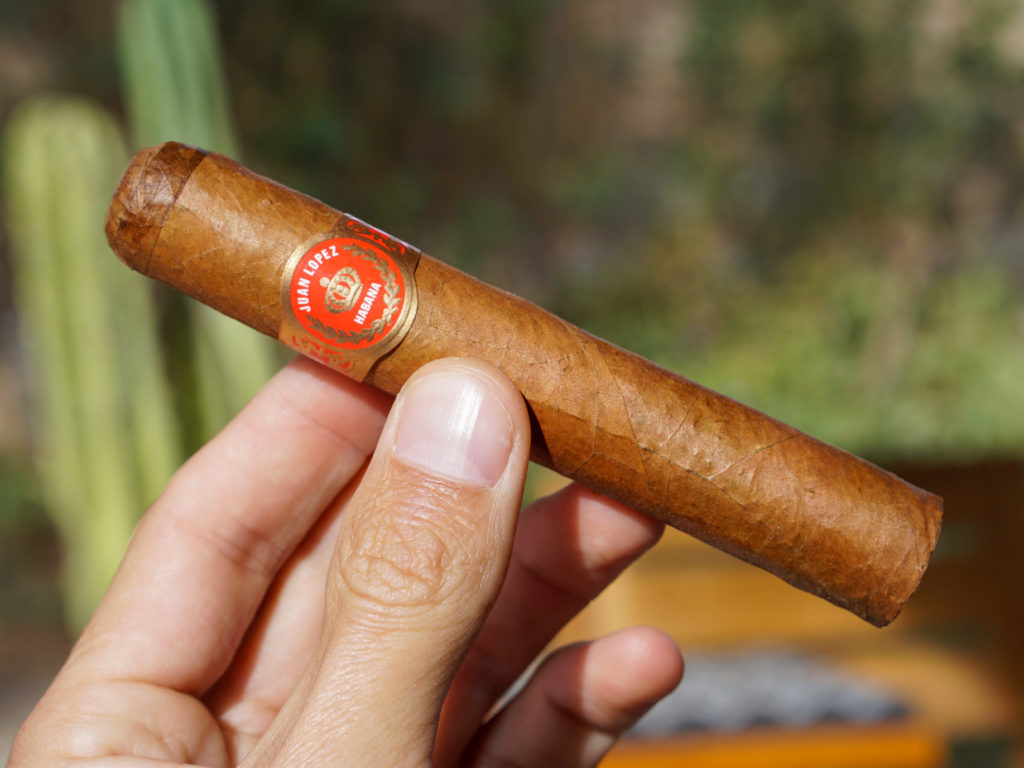
CONSTRUCTION
The construction is a tad on the rustic side. The wrapper has noticeable veins and seams running up toward the cap. The pack is firm and only one of the cigars reviewed had any soft or lightly packed spots. The cap is a triple cap construction that had no issues after cutting.
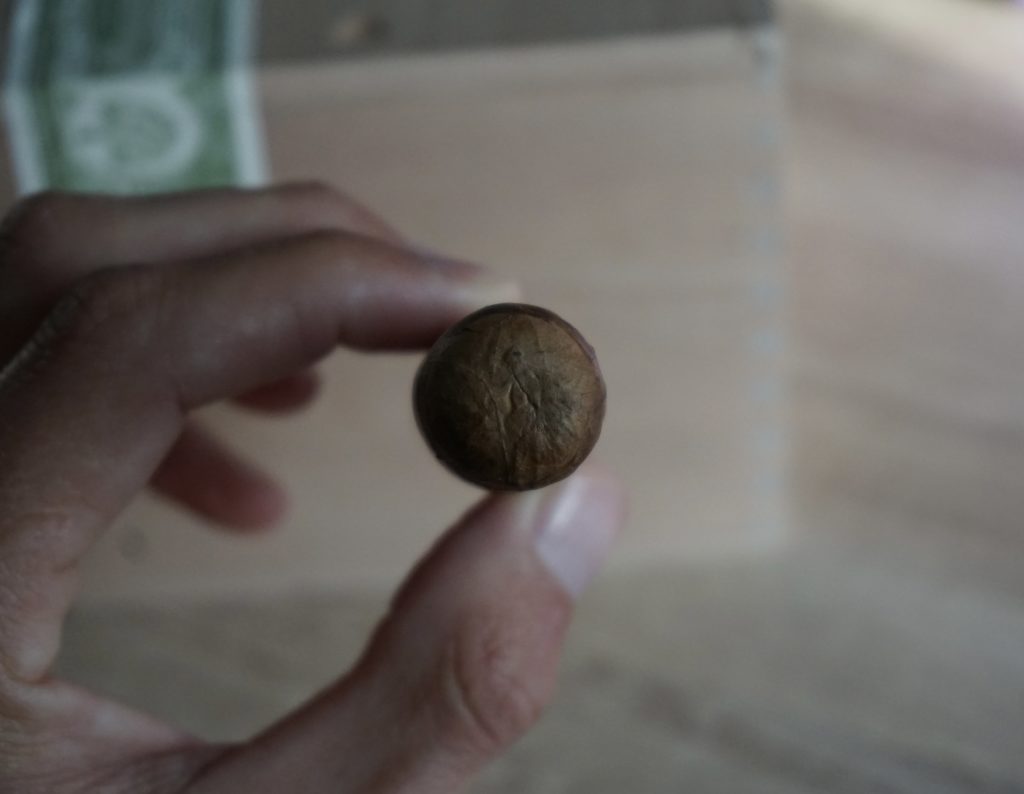
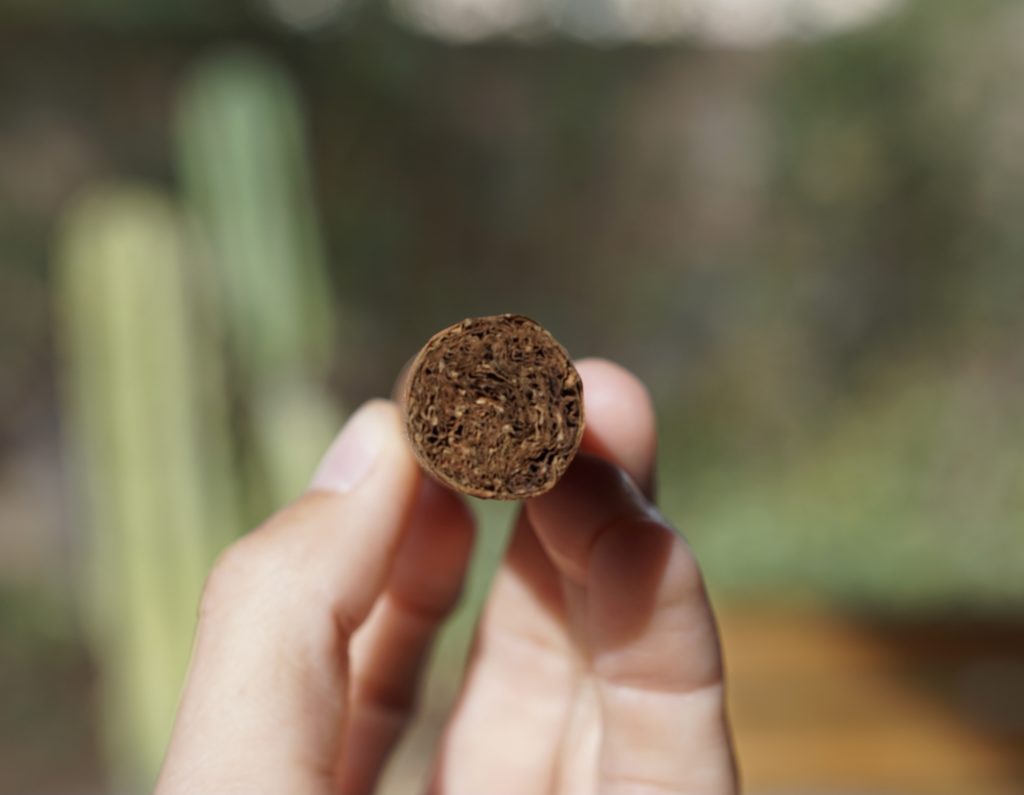
AROMA
There isn’t a complex aroma coming from this cigar. The wrapper has the typical Cuban dry hay with some additional soft cedar. The foot has the same dry hay, subtle cedar but with an additional honey sweetness. All these scents help to build a foundation for the type of experience you are going to have with this cigar: subtle but reliable.
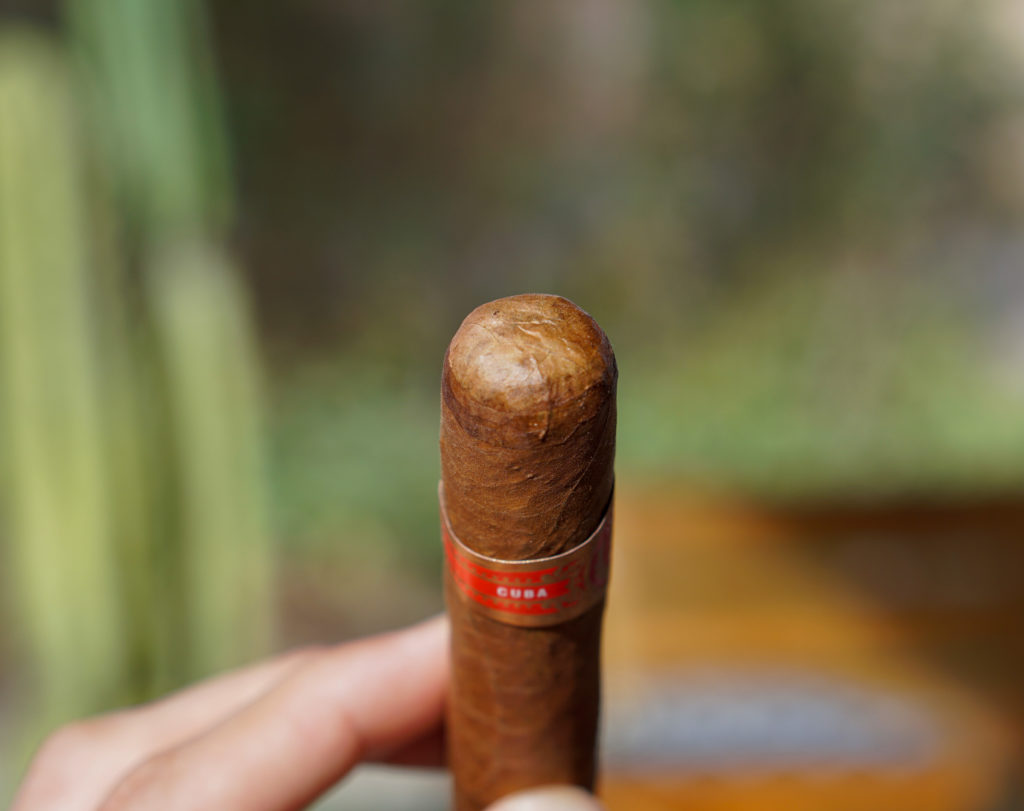
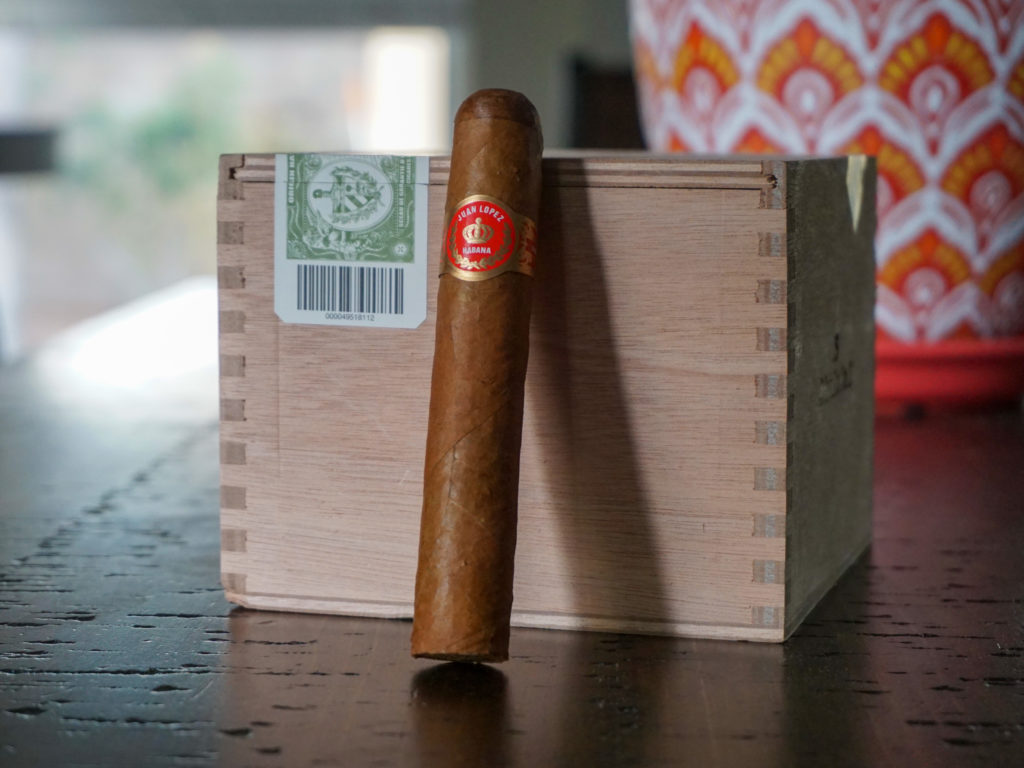
SMOKING EXPERIENCE
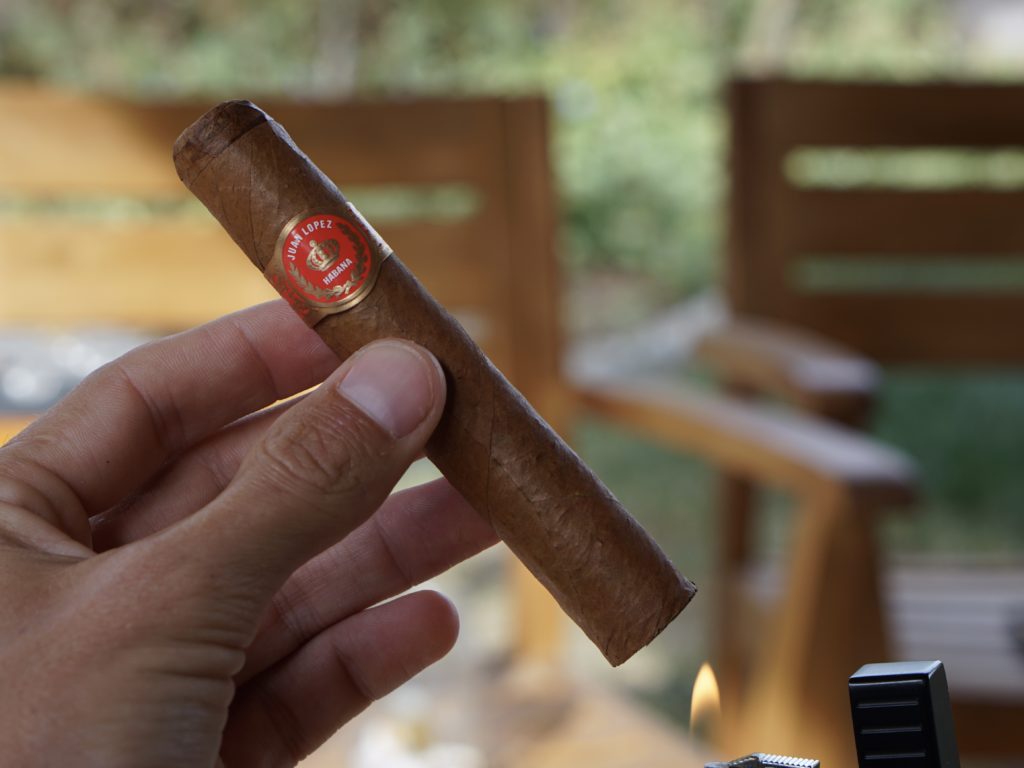
LIGHT & DRAW
Cut: Guillotine
Fire: Soft Flame
The toast and lighting of the cigar went as would be expected: toasted evenly with no weird burn or dipping. The draw is a tad on the snug side, but it seems like it may open with some heat.
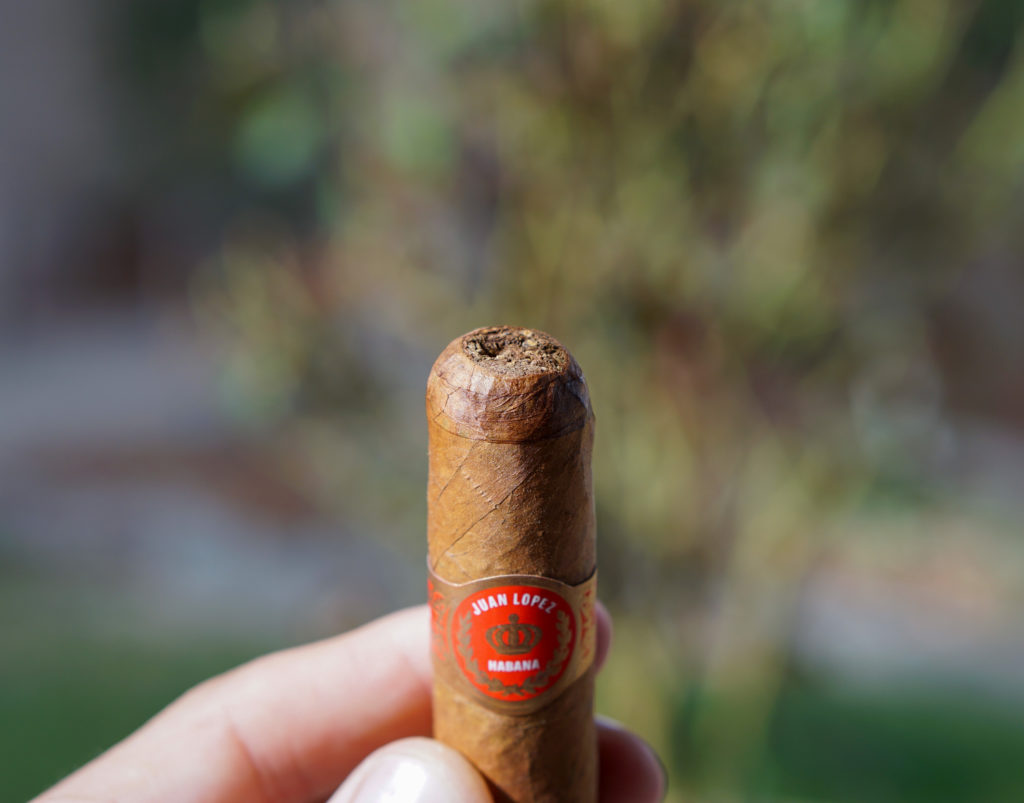
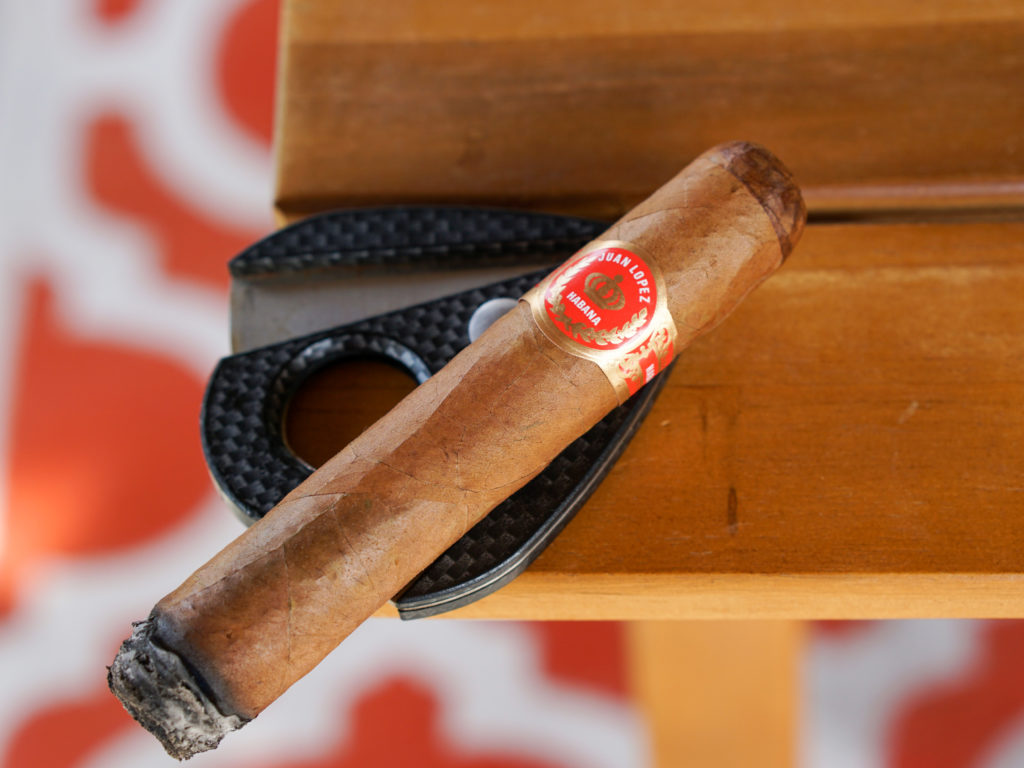
SMOKE
There isn’t much to rave about with the smoke from the No. 2. The majority of the cigar had a very wispy, mild smoke that leaves the smoker wanting. There is a slight butteriness that shows up halfway through the cigar that helps balance out some of the dryness.
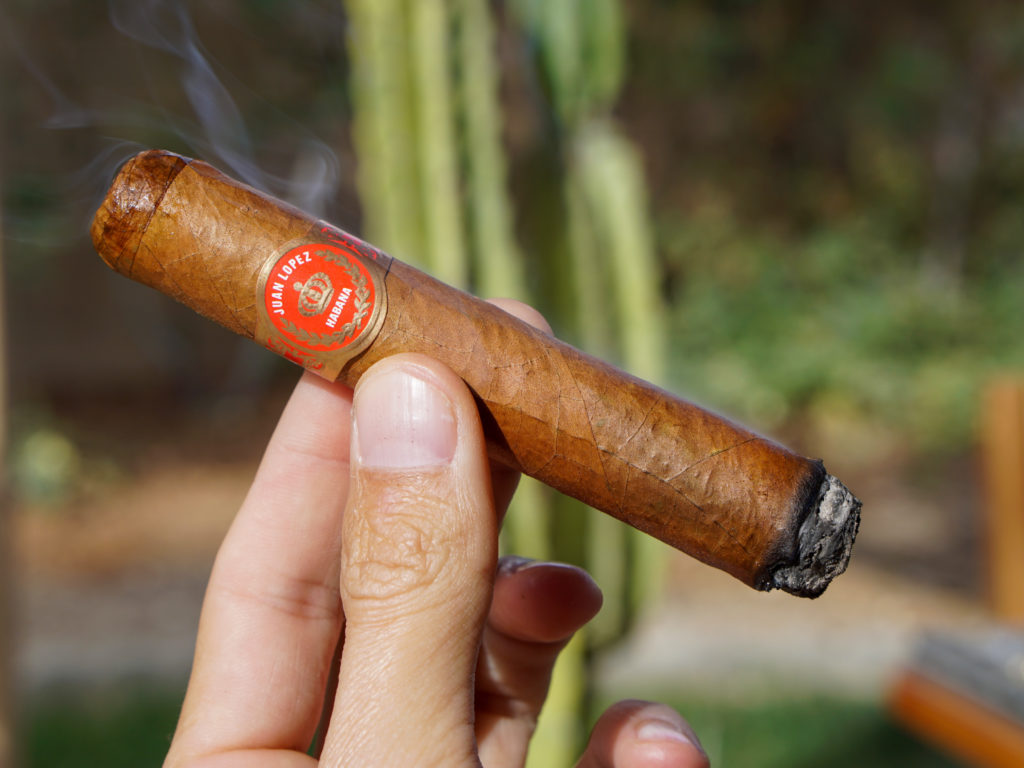
FIRST THIRD
>> Earth, Coffee, Citrus Zest
The first few centimeters are a bit rough; there is an overwhelming flavor of campfire ash and ammonia. The ash and ammonia fade out roughly a half inch into the cigar, but there is a bit of ash on the aftertaste that lingers. The profile does begin to open after the one inch mark. There is a hint of damp earth–think of digging around the garden just after the rain. Once you get past some of the earthy notes, there are nice coffee and cream notes that cling to the palate. The retrohale has some citrus zest and black coffee with little to no pepper. This cigar also has a very dry profile, so make sure you have some libations on hand.
SECOND THIRD
>> Coffee, Cream, Fruit
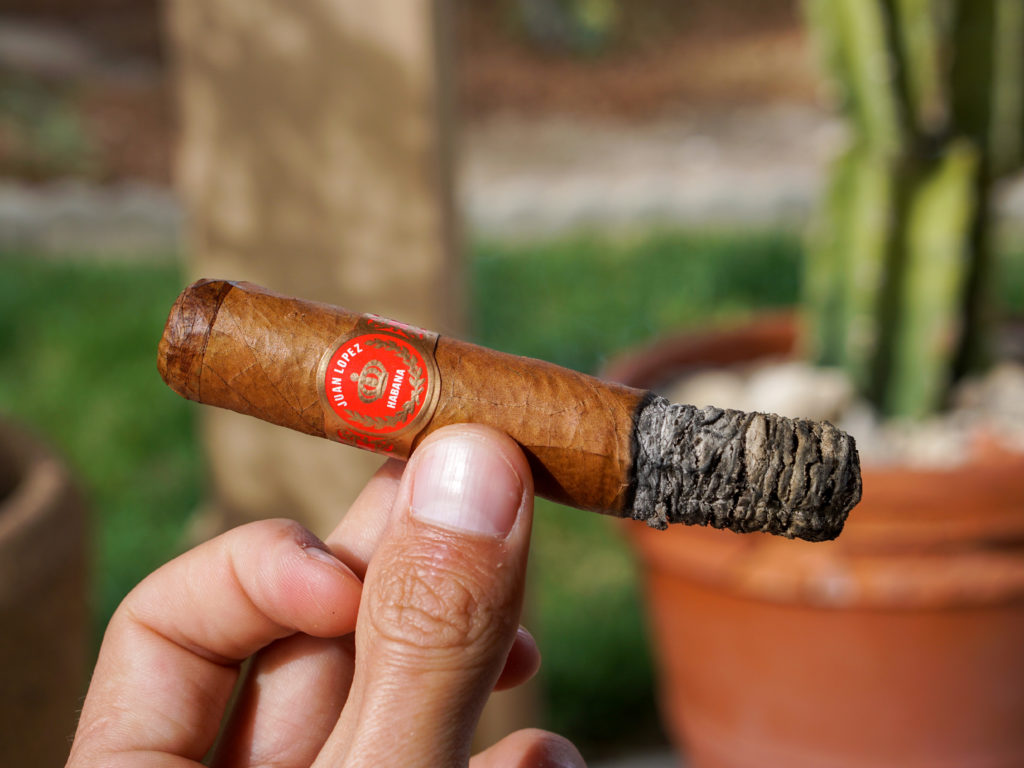
There hasn’t been much in the way of transitions moving into the middle third. The majority of the flavors coming through are still black coffee, and cream with an added hint of candied fruit. Even with the subtle changes, the black coffee notes are overly dominating, and it is a struggle trying to find any of the other flavors. The retrohale has taken on more of creamy texture with a nice floral and baking spice quality. This is still a very dry cigar smoking experience; pairing this cigar with dark chocolate may help counteract the dryness.
FINAL THIRD
>> Cedar, Fruit, Spice
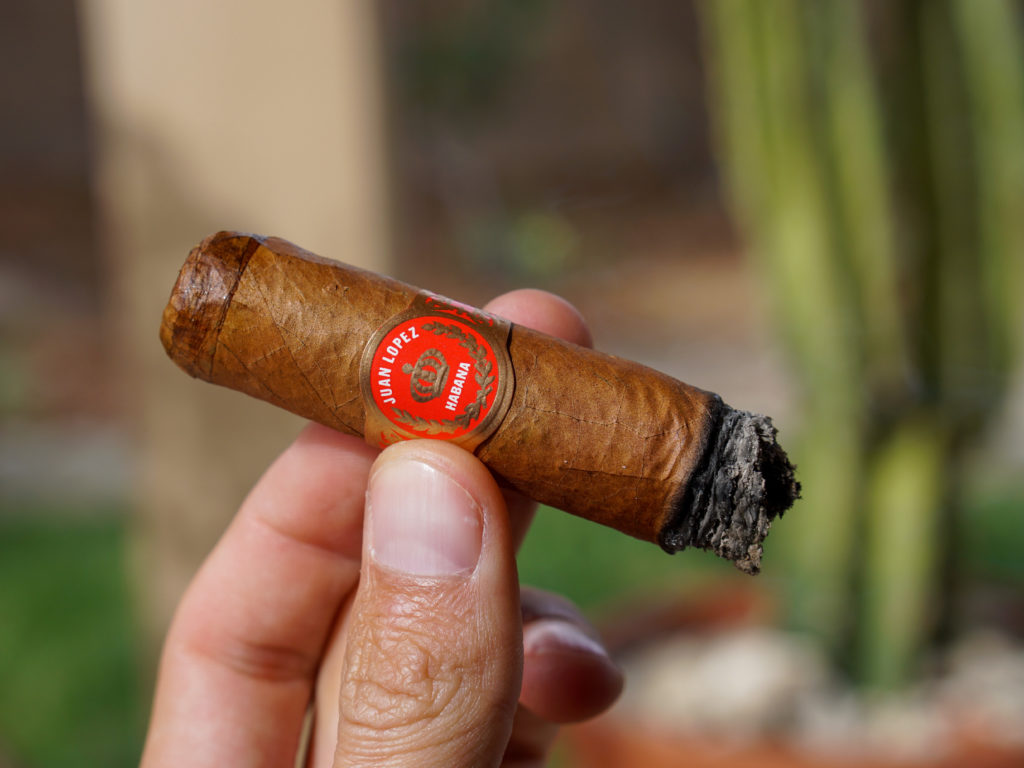
The last third follows in the same vein as the previous thirds: lots of coffee and cream notes with hints of fruit, cedar, and citrus peppered throughout. The Cuban twang was more pronounced in the last third. This may have been the driest section of the entire smoking experience. The retrohale is unchanged from the second half of the cigar: cream, floral notes, and baking spices.
RATING & FINAL THOUGHTS
FLAVOR PROGRESSION
For a quality line from Habanos S.A. there is less transition and complexity than I would expect. There were subtle changes from one section to the next but nothing dramatic. Overall, it was a slightly underwhelming experience in terms of transition and complexity.
BURN EXPERIENCE
The burn was perfect the entire length of the cigar. Ash line was razor sharp and fell in solid chunks without flaking. The draw was even throughout the entire cigar.
RATING BREAKDOWN
0.60 / 0.80 … Craft & Aesthetic
0.30 / 0.50 … Pre-Light Characteristics
0.50 / 0.50 … Lighting Process
6.00 / 7.70 … Smoking Experience
0.35 / 0.50 … Personal Enjoyment
COMPLIMENTS & CRITIQUES
- These are well constructed and burn perfectly
- Priced competitively and age very well
- The Juan Lopez profile is too dry for my taste
- There isn't much complexity to the brand
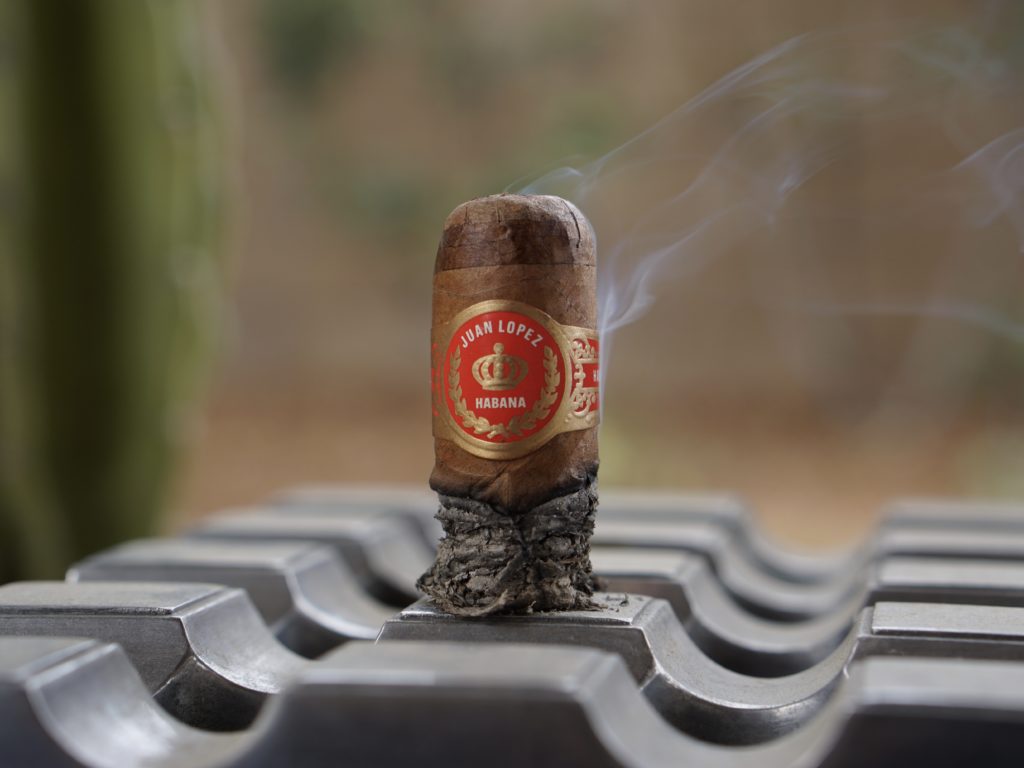
The “2” is for aging.
While I love this cigar with a few years of age, this is not a brand that I would smoke straight off the rolling table. As much as I enjoy a cigar and water, this is a cigar begs for a more involved pairing. The No. 2 pairs perfectly with a well made cappuccino or latte, sweet cocktail (I would suggest a mojito), or a higher percentage cacao dark chocolate. However, if you are the person who enjoys a very dry and woody cigar, this will be in your wheelhouse. With all that said, if you can wait, you are in for a treat. After a few years, the wood notes mellow out, giving way to the fermented fruit that gets over powered in their younger cigars.
SIMPLY STOGIES RATING: 7.75 / 10.0
4 comments on “Cigar Review: The Juan Lopez Selección No. 2 Underwhelms Without Age”
Comments are closed.



I agree with this review. I too experienced the ash taste in the first third. I had to look up reviews to see if this was expected. I also found the draw to be very tight. A mellow creamy coffee on the second was welcome, but not sufficient to redeem the overall experience. I’d avoid purchasing these in future.
Thanks for reading Randolf. Hopefully with some age these will smooth out.
Enjoyed the review. In your opinion, what may be the ideal aging range for this cigar? I have most of a box left from 2019 and my experiences at 1, 2 and three years have been similar to yours but maybe even more underwhelming. Sharp dry Cedar cedar cedar with a hint of juniper is all I’m getting.
Thanks Ryan. Yea the cedar notes I think will be hard to age out. But, from the stock I have, five years seems to be the sweet spot.